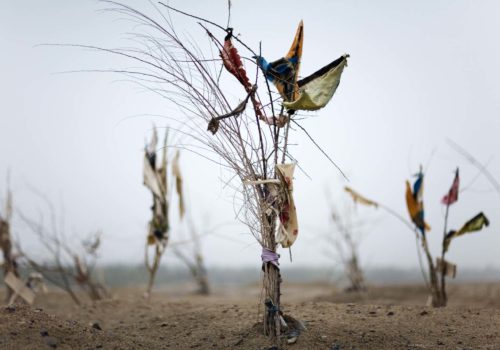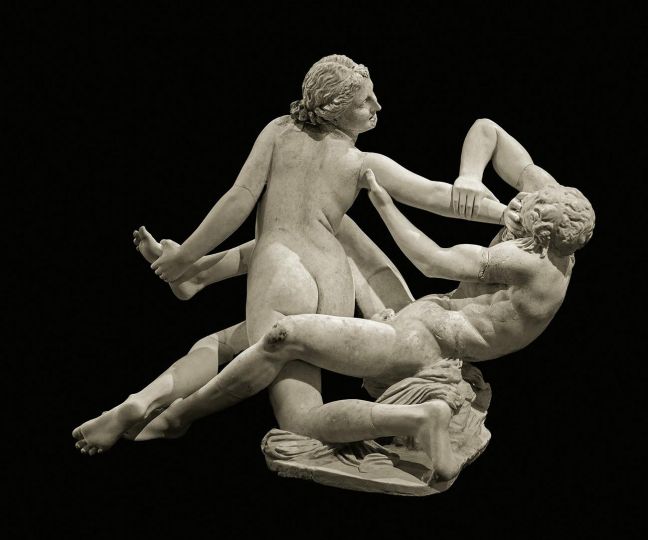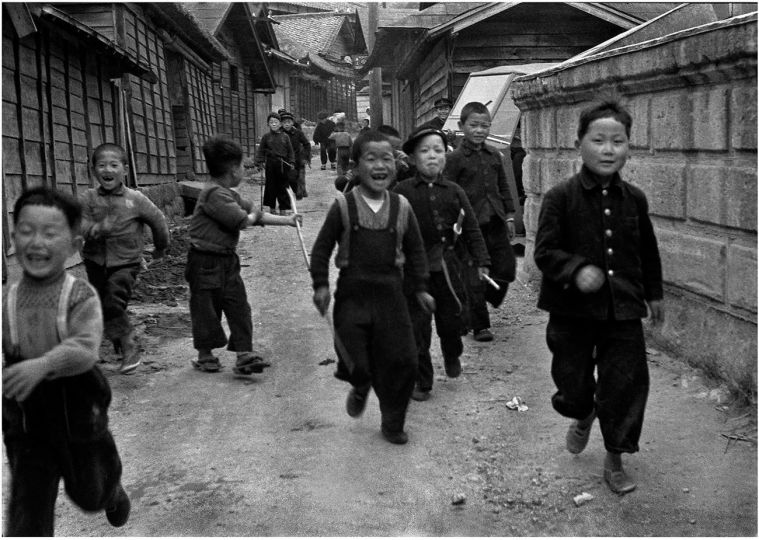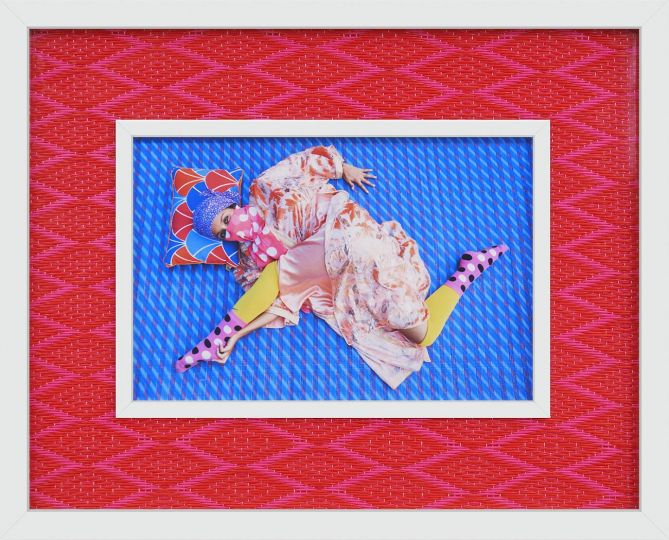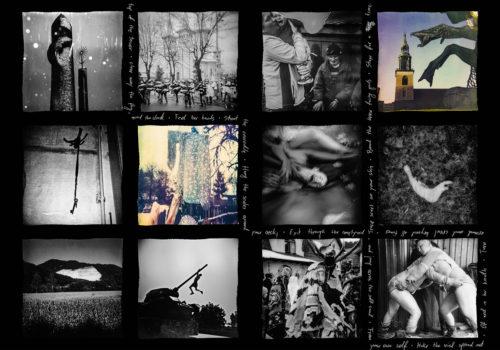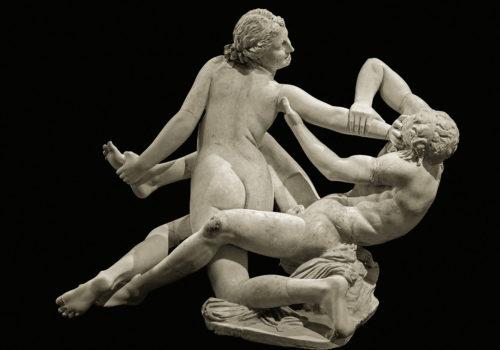Though the Xinjiang region of Central China is a cultural crossroads of historic importance, outsiders have been generally denied access to the area since it was annexed by China in 1949. It is with great fortune that Lisa Ross was allowed to photograph its holy sites for over ten years, the results of which are collected in Living Shrines of Uyghur China, the subject of an exhibition at The Rubin Museum of Art, New York, and a monograph published by The Monacelli Press.
Ross’ photographs document the shrines created for and during pilgrimages by the Islamic people of Western China, many of which have been maintained over several centuries. Adorned with small devotional offerings that mark a prayer or visit, the shrines are a space where the sacred and profane connect, in the process becoming deeply felt reminders of collective memory and a peaceful faith. Despite vulnerability to the elements, the natural forces of the sand, heat, and winds that whip through the province, the shrines endure and become all the more beautiful for the way in which the temporal is transformed into a timeless marker of all those have come before.
It is in this way that Ross’ photographs echo the nature of the shrine itself, as the images become portals by which we transport ourselves to her side, along the desert floor, and we can feel the elements all around us, we are safe in the care of the spirit world. The photographs embody the energy of the shrines, becoming an oasis, a place of protection, and an intermediary between two worlds. The images are powerful in their simplicity; the starkness of the shrines set against the harsh landscape becomes a testament to the resilience of the human spirit and its submission to the higher power that guides our steps.
As Ross observes, “In my view, art is created in a spiritual dimension, where the artist is a channel. In a culture where there are Saints and shamans, and saints are believed to live eternally, and where ties between the living and the dead are strong, there is a lot of energy present. The energy is visible in the objects created to honor the Saints and those who have passed. You can see it in the markers for prayers and wishes as catalysts of healing.
“When I make my images I hope to convey the depth of that spirit which becomes visible through both the fragility and strength of the spiritual architecture. Faith is fragile. It ebbs and flows. It’s easier to have when things are going well. Faith is invisible yet I see the photographs I make as manifestations of it.”
Art too, requires a leap of faith, a willingness to trust in the ineffable as the spirit of the artist and the subject are conveyed through the medium itself. As viewers, we bear witness to its effect, becoming one with the energy as it transposes shape. It begins in the mind of the artist as it travels through their eye to their hand and into the object itself. When we stand before the object, we open ourselves to this spirit, that same spirit that exists in the shrines themselves. Like the photograph, the shrines are inanimate yet living things, in that they are able to transport this energy to all whom wish to share in the experience.
It is in this way that the photograph finds its place, whether it hangs on the wall of the museum or is held, bound in pages between the hard covers of the book. As Ross notes, “ The exhibition prints have a direct relationship to the body. Standing in front of them, the viewer has a direct point of entry. This can be felt quite strongly with certain images—a ladder leading up and into a bursting array of colored flags and wood branches, the desert sand surrounding it. The prints are made, in a sense, to create access for the viewer. Their surface is soft. There is no glass. There are no people. They are ephemeral portraits of the landscape, humbly inviting you in.
“The book has a different kind of relationship to the body as you hold it in your hands. I think of it at times as a prayer book. There is an intentional rhythm and sequencing of images and text. The book has more images than an exhibition can have so it takes you to more places. The journey has an order, and the essays are meant to enhance the experience. The book further describes the research that went into creating this body of work. You can put it down and pick it up. To quote Alexandre Papas, one of the scholars I collaborated with on this project, ‘This book is a narrative of the discovery of holiness.’ In both the book and the prints I believe the art takes the viewer gently into the spirit world.”
With Ross as our guide through this historic and mystical land, we are both witness and pilgrim of a sort. The very nature of the shrines reminds us that (wo)man is more alike than different, no matter where or when s/he walks the earth. We look at the shrines with a reverential awe, an unconscious knowingness that is part of the Universal Soul. We become one with the heavens and the earth, whether we stand before the shrine itself or Ross’ mystical manifestations of the spirit as it appears in her photographs. We too are out on the limbs of branches now bare but for colored pieces of cloth that mark the landscape as one of timeless cycle of life and death.
MIss Rosen
Exhibition
Lisa Ross: Living Shrines of Uyghur China
through July 8th, 2013
The Rubin Museum of Art
150 W 17th St,
New York, NY 10011
USA
T : (212) 620-5000
Book
Lisa Ross: Living Shrines of Uyghur China
The Monacelli Press
Hardcover -10.2 x 10 x 0.5 inches
128 pages
Language: English
ISBN-10: 1580933505
ISBN-13: 978-1580933506
35$

